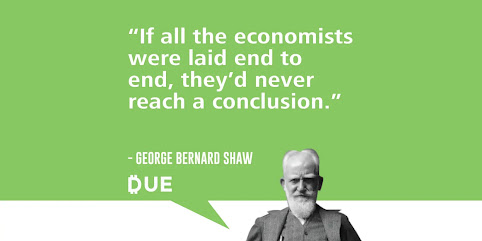Rob Stein, NPR
December 25, 2023

"The therapy has really transformed my life more than I could have ever imagined," Victoria Gray, the first person to receive the CRISPR gene-editing treatment tellls NPR. "It gave me a new lease on life."
Orlando Gili for NPR
Four years ago, Victoria Gray was lying in a hospital bed, exhausted by a lifetime with sickle cell disease and recovering from a grueling experimental treatment she hoped would save her.
Today, the Forest, Miss., mother of four is brimming with energy and hope. She's working full time, keeping up with her teenage children and traveling the world with her husband.
Gray's transformation is the result of the landmark medical experiment that she launched and which culminated in December with a milestone: The Food and Drug Administration's approved the first treatment that uses gene-editing to alleviate a human illness. It's the first genetic therapy for the brutal blood disorder, which had long been neglected by medicine.
For the past four years, NPR has been chronicling Gray's story. NPR broke the news when Gray became the first patient to get the treatment and had exclusive access to report on her ensuing experience.
"I'm ecstatic," Gray told NPR about the Dec. 8 approval. "It's a blessing that they approved this therapy. It's a new beginning for people with sickle cell disease."
A medical marvel that may be out of reach
While the treatment has turned Gray and other patients' lives around, many hurdles remain. The therapy is expensive — $2.2 million per patient — and is complicated and arduous, raising questions about whether it will be accessible to the patients who need it most. Sickle cell disproportionately affects people of African descent and is most common in less affluent countries.
Other questions remain as well: Will the treatment keep working? Will it extend patients' lifespans? Will it cause unforeseen complications in the future?
"This is something that we've been waiting for more than 70 years," said Dr. Lewis Hsu at the University of Illinois Chicago, who serves as the chief medical officer of the Sickle Cell Association of American. "But there are many issues ahead of us."
At the same time, the approval is generating excitement because other treatments that use the gene-editing technique CRISPR are showing promise for other diseases, ranging from rare but devastating genetic disorders, such as muscular dystrophy, to common ailments, including cancer and heart disease.
"It's only the beginning," said Jennifer Doudna of the University of California, Berkeley, who shared a Nobel Prize for helping discover CRISPR. CRISPR allows scientists to make very precise changes in DNA much more easily than ever before. "It's an amazing time," she told NPR.
A grueling treatment for a brutal disease
When NPR introduced Gray to listeners and readers in July 2019, she was 34 and had just undergone the gene-editing procedure at the Sarah Cannon Research Institute in Nashville, Tenn. It was uncharted territory, spurring high hopes but also fraught with uncertainty and risk. It was the first time cells that had been edited with CRISPR had been infused into a patient with sickle cell.

Victoria Gray volunteered for one of the most anticipated medical experiments in decades: the first attempt to use the gene-editing technique CRISPR to treat a genetic disorder in the U.S.
Meredith Rizzo/NPR/Meredith Rizzo/NPR
Sickle cell affects millions of people around the world, including about 100,000 in the U.S. A genetic defect causes bone marrow to produce a defective version of the protein called hemoglobin. That creates deformed, sickle-shaped red blood cells that jam blood vessels and don't carry oxygen normally, causing debilitating and eventually life-shortening complications.
"It's horrible. When you can't walk or, you know, lift up spoon to feed yourself, it gets real hard," Gray said at the time.
One of the worst effects of sickle cell are unpredictable attacks of excruciating pain. These crises force patients to rush to the hospital for emergency blood transfusions and powerful narcotics to alleviate the pain.
For the gene-editing treatment, doctors remove cells from patients' bone marrow so scientists can use CRISPR to edit a gene, enabling the cells to make a healthy form of hemoglobin known as fetal hemoglobin. Patients then undergo chemotherapy to make room in their bone marrow for the edited cells. Finally, doctors infuse billions of the modified cells back into patients' bodies.
NPR produced a series of exclusive reports that documented Gray's progress. That included when she had recovered enough from the July 2, 2019, procedure to leave Nashville months later to make a surprise return home to her family in Mississippi.
"I know it's going to be emotional for me. I miss the hugs and the kisses and just everything," she said then.
NPR was also there when Gray traveled back to Nashville regularly over the following months so doctors could see if the treatment was working.
Early signs of success
During her November 2019 evaluation in Nashville, Gray's doctor revealed the thrilling news that he had found the first signs that the treatment may be successful — her genetically modified "supercells" — as Gray called them — were producing fetal hemoglobin.
"It's a miracle," Gray said at the time. "When you pray for something for so long, all you can have is hope. It's amazing."
Getting that news just before holidays made it particularly special "because sometimes I would be in the hospital on Christmas" instead of with her family, she said. "I'm looking forward to a whole new life for all of us."
Over the next four years, it became clear that the treatment was, in fact, working. Gray never experienced another pain crises or the debilitating fatigue that had plagued her all her life.
"It's wonderful. It's the change I've been waiting on my whole life," Gray told NPR a year after getting treated.
The change enabled Gray to care for herself and her children for the first time, even through the pandemic.
"This is major for me and my family," Gray said two years after her treatment. "Two years without me being in the hospital? Wow. We just can't believe it. But we're just so grateful."
Gray even started working full time selling cosmetics at a Walmart, and began traveling with her husband, Earl.
A victory tour in London
NPR spent a day with Gray sightseeing in London earlier this year during her first overseas trip. She had been invited to be the keynote speaker at a genetics conference celebrating the success of the treatment and exploring the remaining hurdles of gene-editing.
"The life that I once felt like I was only existing in, I am now thriving in," Gray, who is deeply religious, told the audience of scientists, doctors, ethicists and others, bringing many to tears. "I stand here before you today as proof that miracles still happen and that God and science can coexist."
Gray, who's now 38, is especially thrilled that she no longer has to worry about dying prematurely from a stroke or other complications of sickle cell, leaving her children without a mother.
"The therapy has really transformed my life more than I could have ever imagined," Gray said. "It gave me a new lease on life."
But she too worried that many sickle cell patients won't be able to get the treatment, including some of her own relatives who have the disorder. The treatment, which was developed by Vertex Pharmaceuticals and CRISPR Therapeutics, both in Boston, will be marketed as Casgevy.
"That's a horrific feeling for me to have opened the door for sickle cell patients and then sickle cell patients don't receive it," Gray said. "Something has to be done to ensure that the patients who need it the most actually get it."
Copyright 2023 NPR. To see more, visit https://www.npr.org
Q&A: Is gene-editing treatment out of reach for many?
By Dr. Tim Sandle
December 23, 2023

An analysis published Monday in the journal iScience found that while animals are well represented by the current emoji catalog, plants, fungi, and microorganisms get short shrift By Dr. Tim Sandle
December 23, 2023

- Copyright AFP Photo Nicholas KAMM
U.S. approval of a breakthrough gene-editing technology that treats the pain and debilitating effects of sickle cell disease is an important milestone. The FDA’s approval of CRISPR-based Exa-cel means patients with the inherited disease—more than 100,000 people in the U.S.—now have a treatment option other than a bone marrow transplant.
The news comes with concerns, however, that too few people can afford to pay for the therapy. There is also the issue of limited access and demands that come with the high-tech, intense 3- to 6-month treatment, which will, at least initially, be offered by only a handful of health care providers.
Melissa Creary, an assistant professor in health management policy and global public health in U-M’s School of Public Health, is a social scientist who has worked with the sickle cell community. She explains here concerns to Digital Journal.
What are your concerns around access to this treatment, which is estimated to cost $1 million to $2 million?
Melissa Creary: In theory, this is going to be available to anyone with sickle cell who satisfies the eligibility criteria, but in reality the various levels of social and financial support required are likely to be challenging. Your doctor may not alert you to the availability of the treatment. If they do, you may not be able to afford it. If you can, you and your family might have to travel to receive the care. There are a number of barriers in place for the people who stand to benefit.
How can that be addressed?
Creary: Hopefully, different stakeholders throughout the sickle cell community will make sure that information about this technology is widespread. Then it’s about knowing all your options. There is information from the NIH and the Sickle Cell Disease Association of America available to those who are thinking about accessing this technology. This information can help you understand the kind of support you might need before, during and after. There’s a lot to consider not just for the affected patient but for those who need to take care of you. Can they take off work? Can they afford to go with you? In practice it’s going to be life-changing for some and not attainable to others, and this unfortunately is not unusual when it comes to high-tech medically advanced health care.
What is known about insurance coverage or Medicaid and Medicare benefits to pay for the treatment?
Creary: We know that the federal government and places like CMS (Centers for Medicare and Medicaid Services) are working to figure out what payment models could look like. I don’t think any of us know what that is as of now. What we do know is that a very large percentage of people living with sickle cell are on Medicaid, so extending Medicaid benefits to cover the treatment will be extremely important in guaranteeing access.
Why is cost and accessibility not an integral part of the drug, medical development process?
Creary: I understand why cost and accessibility aren’t part of the process, but I would love for that paradigm to shift. I would love for scientists to understand it’s one thing to develop a transformative advancement, and it’s another to make it accessible.
CRISPR stands to transform the lives of those who are able to receive the technology. Many stakeholders have understood that by choosing sickle cell. It signals a recognition of the long history of inequities associated with the disease and the people living with the disease. As the technology comes to market and out of the trial phase, it will be interesting to see how the tensions between social justice and profits work themselves out. The technology as a tool for addressing the genetic mutation and providing life opportunities is promising, but it cannot fully address the deep inequities embodied in the experiences of the majority Black and brown people even once cured.
U.S. approval of a breakthrough gene-editing technology that treats the pain and debilitating effects of sickle cell disease is an important milestone. The FDA’s approval of CRISPR-based Exa-cel means patients with the inherited disease—more than 100,000 people in the U.S.—now have a treatment option other than a bone marrow transplant.
The news comes with concerns, however, that too few people can afford to pay for the therapy. There is also the issue of limited access and demands that come with the high-tech, intense 3- to 6-month treatment, which will, at least initially, be offered by only a handful of health care providers.
Melissa Creary, an assistant professor in health management policy and global public health in U-M’s School of Public Health, is a social scientist who has worked with the sickle cell community. She explains here concerns to Digital Journal.
What are your concerns around access to this treatment, which is estimated to cost $1 million to $2 million?
Melissa Creary: In theory, this is going to be available to anyone with sickle cell who satisfies the eligibility criteria, but in reality the various levels of social and financial support required are likely to be challenging. Your doctor may not alert you to the availability of the treatment. If they do, you may not be able to afford it. If you can, you and your family might have to travel to receive the care. There are a number of barriers in place for the people who stand to benefit.
How can that be addressed?
Creary: Hopefully, different stakeholders throughout the sickle cell community will make sure that information about this technology is widespread. Then it’s about knowing all your options. There is information from the NIH and the Sickle Cell Disease Association of America available to those who are thinking about accessing this technology. This information can help you understand the kind of support you might need before, during and after. There’s a lot to consider not just for the affected patient but for those who need to take care of you. Can they take off work? Can they afford to go with you? In practice it’s going to be life-changing for some and not attainable to others, and this unfortunately is not unusual when it comes to high-tech medically advanced health care.
What is known about insurance coverage or Medicaid and Medicare benefits to pay for the treatment?
Creary: We know that the federal government and places like CMS (Centers for Medicare and Medicaid Services) are working to figure out what payment models could look like. I don’t think any of us know what that is as of now. What we do know is that a very large percentage of people living with sickle cell are on Medicaid, so extending Medicaid benefits to cover the treatment will be extremely important in guaranteeing access.
Why is cost and accessibility not an integral part of the drug, medical development process?
Creary: I understand why cost and accessibility aren’t part of the process, but I would love for that paradigm to shift. I would love for scientists to understand it’s one thing to develop a transformative advancement, and it’s another to make it accessible.
CRISPR stands to transform the lives of those who are able to receive the technology. Many stakeholders have understood that by choosing sickle cell. It signals a recognition of the long history of inequities associated with the disease and the people living with the disease. As the technology comes to market and out of the trial phase, it will be interesting to see how the tensions between social justice and profits work themselves out. The technology as a tool for addressing the genetic mutation and providing life opportunities is promising, but it cannot fully address the deep inequities embodied in the experiences of the majority Black and brown people even once cured.
Dr. Tim Sandle is Digital Journal's Editor-at-Large for science news. Tim specializes in science, technology, environmental, business, and health journalism. He is additionally a practising microbiologist; and an author. He is also interested in history, politics and current affairs.




















